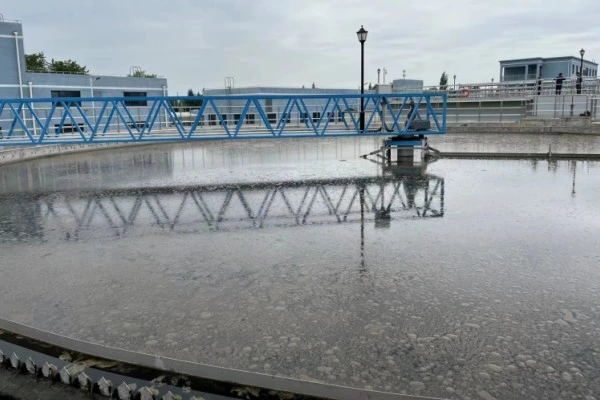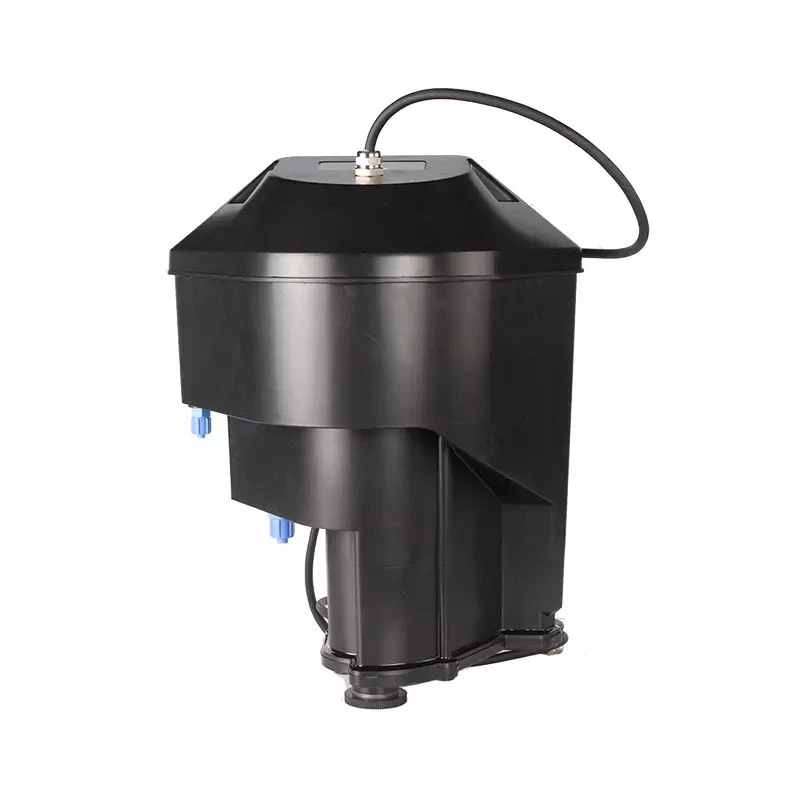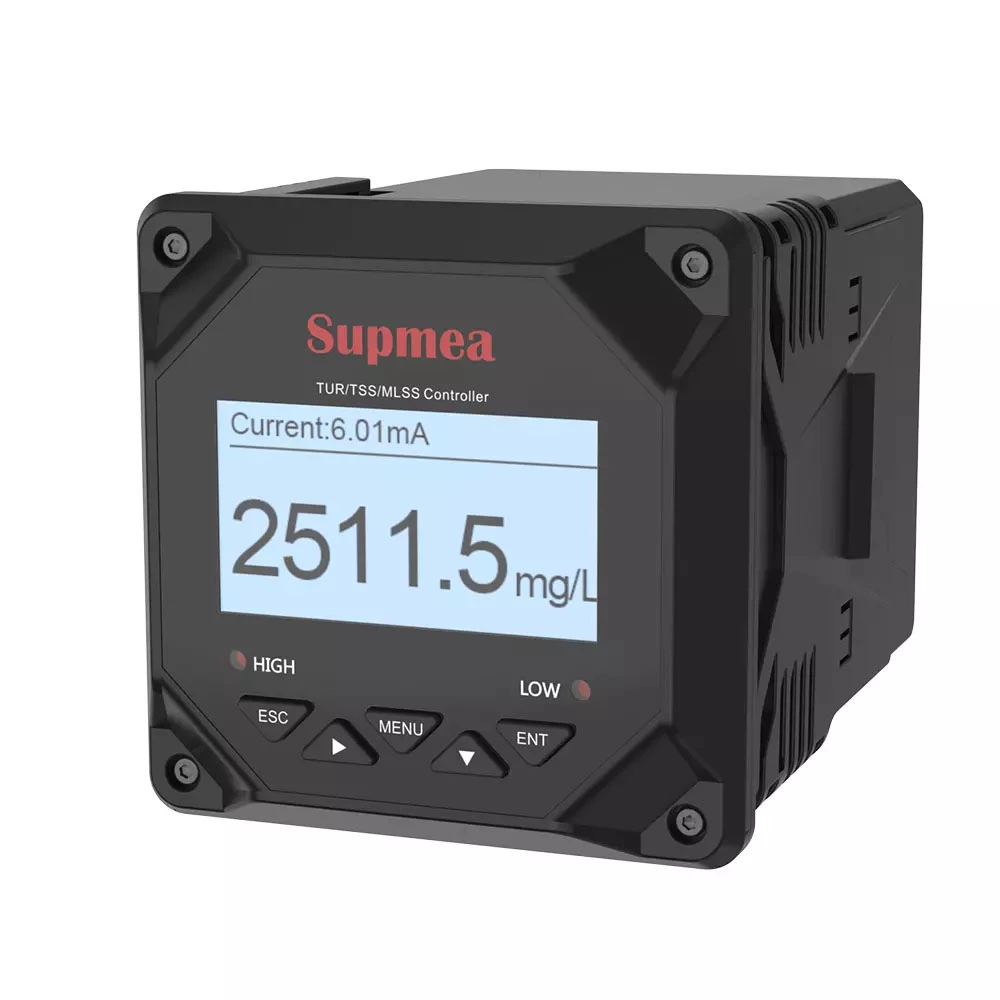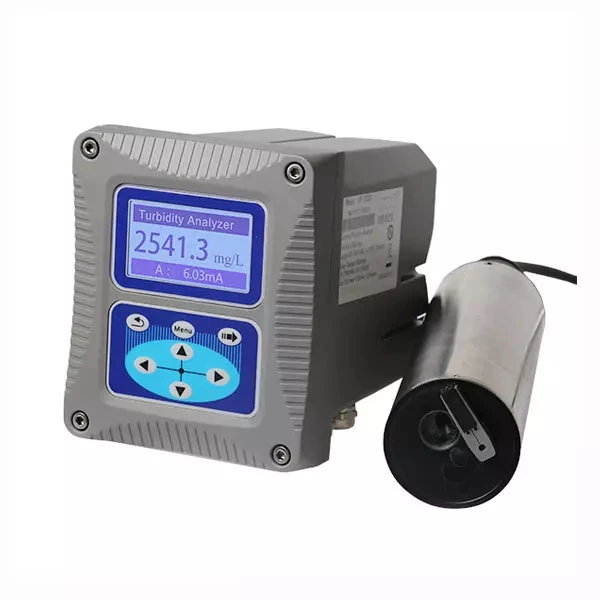Turbidity of Water
What is Turbidity?
Turbidity refers to the cloudiness or haziness of a liquid, often caused by the presence of suspended particles, such as silt, clay, microscopic organisms, or other fine debris. In the context of water, turbidity is a measure of how clear or murky the water appears. It's an important parameter in water quality assessment because it can indicate the presence of contaminants or pollutants.
Turbidity is typically measured using a unit called Nephelometric Turbidity Unit (NTU) or Formazin Nephelometric Unit (FNU). The measurement is based on the scattering of light by particles in the water. A turbidimeter is a device used to measure turbidity by shining a light through a water sample and measuring how much light is scattered by the particles. The higher the amount of scattered light, the higher the turbidity.
What Causes Turbidity?
Several factors can contribute to the turbidity of water:
- Natural Sources: Erosion, rainfall, and natural processes can introduce soil, clay, and other particles into water bodies, increasing turbidity.
- Human Activities: Construction, agriculture, and deforestation can lead to soil erosion, which in turn increases the amount of sediment in water, causing higher turbidity.
- Wastewater Discharge: Improperly treated or untreated wastewater discharge can introduce various pollutants and particles into water bodies, raising turbidity levels.
- Algal Blooms: Excessive growth of algae due to nutrient pollution can contribute to high turbidity levels as well.
- Runoff: Urban areas with paved surfaces can cause water runoff to pick up pollutants and sediments, leading to increased turbidity in nearby water bodies.
Why is turbidity important?
- Environmental Impact: High turbidity can affect aquatic ecosystems by reducing the amount of light that penetrates the water, inhibiting the growth of aquatic plants and disrupting the food chain.
- Drinking Water Treatment: Water treatment plants need to remove suspended particles before supplying water to households. Monitoring turbidity is crucial to ensure effective treatment and safe drinking water.
- Recreational Activities: Turbid water is less visually appealing and can discourage recreational activities like swimming, boating, and fishing.
- Ecological Health: Changes in turbidity levels can be an indicator of ecological health. Drastic increases may signal pollution events.
Regular monitoring and management of turbidity are vital for maintaining water quality and ensuring the health of aquatic ecosystems and human communities that rely on these water sources.

Methods of Turbidity Measurement
There are a few common methods used to measure turbidity in water:
- Nephelometric Method: This method involves shining a light through a water sample and measuring the amount of scattered light at a specific angle. The instrument used for this purpose is called a nephelometer. The intensity of scattered light is proportional to the concentration of particles in the water, which is an indicator of turbidity. This method is standardized and widely used for accurate turbidity measurements.
- Turbidimetric Method: Similar to the nephelometric method, this technique measures the intensity of light scattered by particles in the water. However, in this method, the light detector is positioned at 90 degrees to the light source. The concentration of particles is again determined by the intensity of scattered light.
- Secchi Disk: This is a simple, visual method used to estimate turbidity. A Secchi disk is a black and white disk lowered into the water until it is no longer visible from the surface. The depth at which the disk disappears gives an approximation of water clarity, which is inversely related to turbidity.
- Turbidity Tubes: Turbidity tubes, also known as Jackson Turbidity Units (JTUs), are clear tubes marked with a scale. Water is poured into the tube until a specific pattern on the bottom becomes obscured. The height of the water column gives an indication of turbidity.
- Digital Turbidity Meters: These portable devices use light scattering principles and advanced electronics to provide quick and accurate turbidity measurements. They often display results in Nephelometric Turbidity Units (NTUs) or Formazin Nephelometric Units (FNUs).
- Laboratory Analyzers: These are more advanced instruments found in laboratories. They automate the process of measuring turbidity using complex light scattering techniques, providing highly accurate results.
When choosing a method, factors like the required accuracy, resources available, and the specific application should be considered. Modern digital methods are more accurate and efficient, especially for scientific and regulatory purposes, while simpler methods like Secchi disks and turbidity tubes can be useful for quick estimations in the field.
Turbidity Standards and Guidelines
Turbidity standards and guidelines are established to provide a framework for assessing and managing the turbidity levels in water bodies. These standards help ensure water quality, protect public health, and maintain the integrity of aquatic ecosystems. Here are some key standards and guidelines related to turbidity:
- EPA Turbidity Standards for Drinking Water: The U.S. Environmental Protection Agency (EPA) sets turbidity standards for drinking water. According to the Surface Water Treatment Rule, the maximum allowable turbidity level at any time in a public water system is 1 nephelometric turbidity unit (NTU). This standard is in place to ensure that water treatment processes effectively remove particles and contaminants.
- Wastewater Discharge Limits: Various environmental agencies establish limits on turbidity for wastewater discharges into water bodies. These limits aim to prevent excessive sedimentation and pollution of receiving waters. Turbidity limits vary based on the type of water body and its designated use (e.g., recreational, aquatic life support).
- Recreational Water Quality Guidelines: Turbidity guidelines are often included in water quality standards for recreational waters such as beaches and swimming areas. High turbidity levels can reduce water clarity and affect recreational activities. Specific guidelines may vary by region and the intended use of the water body.
- Ecological Impact Guidelines: Some environmental agencies provide guidelines for turbidity levels in natural water bodies to protect aquatic ecosystems. High turbidity can block sunlight, impacting photosynthesis and aquatic plant growth, which can disrupt the entire ecosystem.
- Construction Site Runoff Guidelines: Construction activities can contribute to increased turbidity in nearby water bodies due to soil erosion. Many jurisdictions have guidelines for construction site management to minimize erosion and sediment runoff, helping to maintain acceptable turbidity levels in nearby water bodies.
- Monitoring and Reporting Guidelines: Guidelines often specify how turbidity should be measured, recorded, and reported for regulatory compliance and assessment purposes. This helps ensure consistency and accuracy in measuring turbidity levels across different locations and timeframes.
It's important to note that turbidity standards and guidelines can vary between countries, regions, and local jurisdictions based on factors like local water quality conditions, ecosystem sensitivity, and human water use patterns. These standards are continually updated as new scientific research and data become available.
Adhering to turbidity standards and guidelines is crucial for maintaining water quality, protecting public health, and preserving the health of aquatic ecosystems. Monitoring and managing turbidity levels play a significant role in ensuring the sustainability of water resources.
Effects of High Turbidity on Aquatic Life
High turbidity, which indicates increased levels of suspended particles in water, can have several negative effects on aquatic life and the overall health of aquatic ecosystems. Here are some of the key impacts:
- Light Penetration: Suspended particles in turbid water scatter and absorb light, reducing the penetration of sunlight into the water. This can hinder photosynthesis, the process by which aquatic plants produce energy from sunlight. Submerged aquatic plants and algae require sufficient light for growth, and decreased light availability can lead to reduced plant productivity.
- Algae Growth and Blooms: While excessive nutrients can also contribute to algal blooms, high turbidity can exacerbate the problem. Algae depend on light for growth, and reduced light penetration can limit their growth. However, some types of algae, especially those that thrive in low-light conditions, can still flourish in turbid waters, leading to imbalanced algal populations and potential harmful algal blooms.
- Disrupted Food Chains: Turbidity can affect the food chain in aquatic ecosystems. Reduced light and altered plant growth can lead to decreased availability of food for herbivores. This, in turn, can impact predators that rely on these herbivores for sustenance, causing disruptions in the entire food chain.
- Respiratory Stress: High turbidity can affect fish and other aquatic organisms by clogging their gills. Fish extract oxygen from water through their gills, and excessive particles can interfere with this process, causing stress and potentially reducing their ability to breathe properly.
- Habitat Degradation: Bottom-dwelling organisms, such as aquatic insects and benthic invertebrates, may suffer from increased turbidity. Fine sediment settling on the streambed can smother their habitats, disrupt their feeding behaviors, and reduce their overall survival.
- Spawning and Reproduction: Many fish species rely on clear water for successful reproduction. High turbidity can hinder the ability of fish to find suitable spawning sites, locate eggs, and protect their nests. This can lead to reduced reproductive success and impact fish populations.
- Migration Patterns: Some fish species, particularly those that migrate for spawning or feeding, use visual cues in clear water to navigate. High turbidity can disorient them, affecting their ability to find their way and complete their migratory journeys.
- Biodiversity Decline: The combined effects of reduced plant growth, disrupted food chains, and habitat degradation can lead to a decline in overall aquatic biodiversity. This can have long-term consequences for the health and resilience of aquatic ecosystems.
Efforts to manage and mitigate the effects of high turbidity on aquatic life include reducing sediment runoff from construction sites, implementing erosion control measures, protecting riparian vegetation, and properly managing wastewater discharge. Monitoring and managing turbidity levels are essential for maintaining healthy aquatic ecosystems and preserving the diverse array of species that depend on them.
Turbidity's Role in Drinking Water Treatment
Turbidity plays a crucial role in the process of treating drinking water to make it safe and suitable for consumption. The level of turbidity in raw water can indicate the presence of suspended particles, microorganisms, and other contaminants. As such, monitoring and managing turbidity is an essential step in ensuring that drinking water treatment processes are effective. Here's how turbidity is involved in drinking water treatment:
- Source Water Assessment: Before water treatment begins, the source water's turbidity is assessed. Higher turbidity levels can suggest the presence of pollutants like sediments, bacteria, and other particles. Monitoring turbidity provides a preliminary indication of water quality.
- Coagulation and Flocculation: The first step in treating turbid water is coagulation. Chemical coagulants are added to the water to destabilize and aggregate suspended particles. These particles then form larger clumps known as flocs through a process called flocculation. The flocs settle more easily and can be removed from the water.
- Sedimentation: In this step, the water with the coagulated particles enters a settling basin or sedimentation tank. The larger flocs settle to the bottom due to their increased weight, and clear water rises to the top. This process removes a significant portion of the suspended particles and turbidity.
- Filtration: After sedimentation, the water is passed through filters to remove remaining suspended particles that escaped the settling process. Filters can be made of sand, gravel, or other materials that effectively trap particles.
- Disinfection: Once the water is clarified through coagulation, flocculation, sedimentation, and filtration, it's disinfected to kill or inactivate harmful microorganisms. Common disinfection methods include chlorination, chloramination, or ultraviolet (UV) treatment.
- Monitoring and Adjustment: Throughout the treatment process, turbidity levels are continuously monitored. If turbidity levels exceed certain thresholds, adjustments can be made to the treatment process to ensure that water quality standards are met.
Turbidity is a critical parameter because high levels of turbidity can interfere with the effectiveness of water treatment processes. If turbidity isn't properly managed, particles and microorganisms can escape removal steps and reach consumers' taps, potentially causing health risks. For example, particles can shield bacteria and viruses from disinfection, allowing them to survive and potentially cause waterborne diseases.
In drinking water treatment, the goal is to reduce turbidity to levels that meet regulatory standards and provide safe, clear, and visually appealing drinking water. Effective treatment processes, regular monitoring, and appropriate adjustments ensure that turbidity-related risks are minimized, and the treated water is of high quality for consumption.
The Connection Between Turbidity and Total Suspended Solids (TSS)
Turbidity and Total Suspended Solids (TSS) are closely related parameters that both provide information about the presence of particles in water. They are often used to assess water quality, especially in terms of clarity and the amount of suspended material in a water sample. Here's how they are connected:
Turbidity
Turbidity refers to the cloudiness or haziness of a liquid caused by the scattering and absorption of light by suspended particles. It is a measure of how much light is prevented from passing through the water due to the presence of these particles. Turbidity is typically measured using a turbidimeter, and the unit of measurement is Nephelometric Turbidity Units (NTUs) or Formazin Nephelometric Units (FNUs). High turbidity indicates a larger number of suspended particles and reduced water clarity.
Total Suspended Solids (TSS)
Total Suspended Solids (TSS) is a measurement of the total mass of solid particles that are suspended in a water sample. These particles can include sediment, organic matter, algae, and other fine debris. TSS is often determined by filtering a known volume of water through a filter paper, drying the filter paper with the collected solids, and then weighing the dried solids. TSS is typically expressed in milligrams per liter (mg/L) or parts per million (ppm).
Connection Between Turbidity and TSS
Turbidity and TSS are closely related because they both provide information about the concentration of suspended particles in water. When there is a higher concentration of suspended particles in water, light is scattered and absorbed by these particles, leading to increased turbidity. In other words, higher TSS levels generally lead to higher turbidity levels.
However, it's important to note that turbidity is a measurement of the optical property of water (how much light is affected), while TSS is a measurement of the physical quantity of solids suspended in the water. This means that while turbidity gives a quick assessment of water clarity, TSS provides a more precise measurement of the actual mass of solids present.
Water treatment facilities and environmental monitoring often use both turbidity and TSS measurements because they complement each other in assessing the quality of water. High turbidity can be an indicator of potential problems, prompting further investigation and potential adjustments to water treatment processes. TSS measurements offer a more quantitative assessment of the suspended particles, aiding in compliance with regulatory standards and understanding the impact of particles on aquatic ecosystems.






